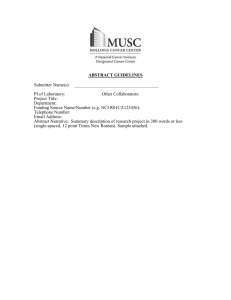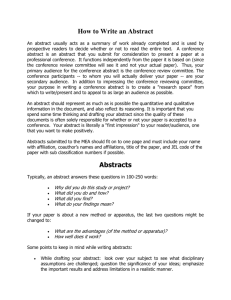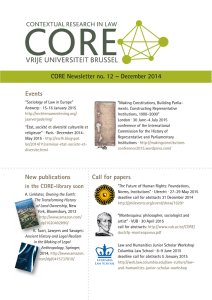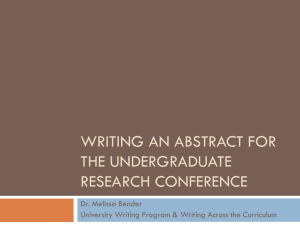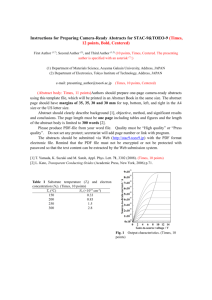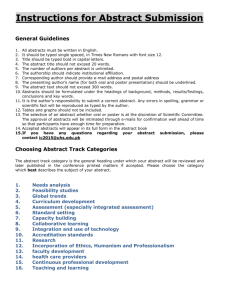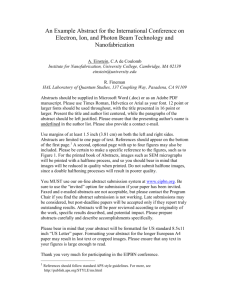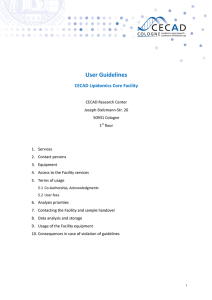abstract coversheet - Hollings Cancer Center
advertisement
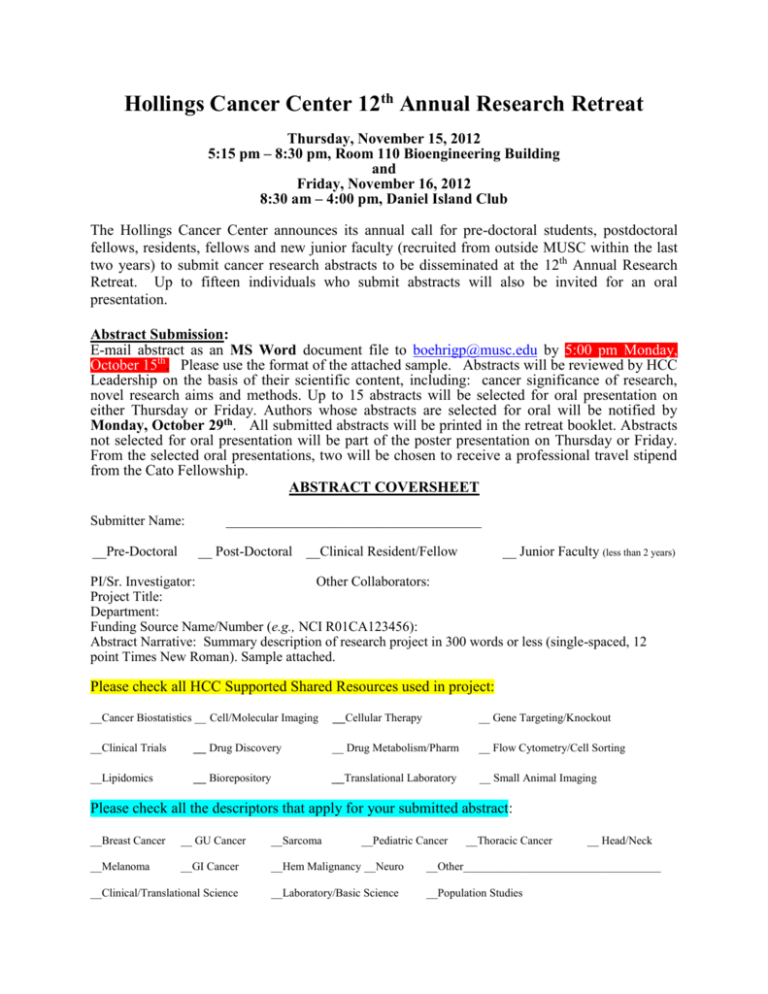
Hollings Cancer Center 12th Annual Research Retreat Thursday, November 15, 2012 5:15 pm – 8:30 pm, Room 110 Bioengineering Building and Friday, November 16, 2012 8:30 am – 4:00 pm, Daniel Island Club The Hollings Cancer Center announces its annual call for pre-doctoral students, postdoctoral fellows, residents, fellows and new junior faculty (recruited from outside MUSC within the last two years) to submit cancer research abstracts to be disseminated at the 12th Annual Research Retreat. Up to fifteen individuals who submit abstracts will also be invited for an oral presentation. Abstract Submission: E-mail abstract as an MS Word document file to boehrigp@musc.edu by 5:00 pm Monday, October 15th. Please use the format of the attached sample. Abstracts will be reviewed by HCC Leadership on the basis of their scientific content, including: cancer significance of research, novel research aims and methods. Up to 15 abstracts will be selected for oral presentation on either Thursday or Friday. Authors whose abstracts are selected for oral will be notified by Monday, October 29th. All submitted abstracts will be printed in the retreat booklet. Abstracts not selected for oral presentation will be part of the poster presentation on Thursday or Friday. From the selected oral presentations, two will be chosen to receive a professional travel stipend from the Cato Fellowship. ABSTRACT COVERSHEET Submitter Name: __Pre-Doctoral _____________________________________ __ Post-Doctoral __Clinical Resident/Fellow __ Junior Faculty (less than 2 years) PI/Sr. Investigator: Other Collaborators: Project Title: Department: Funding Source Name/Number (e.g., NCI R01CA123456): Abstract Narrative: Summary description of research project in 300 words or less (single-spaced, 12 point Times New Roman). Sample attached. Please check all HCC Supported Shared Resources used in project: __Cancer Biostatistics __ Cell/Molecular Imaging __Cellular Therapy __ Gene Targeting/Knockout __Clinical Trials __ Drug Discovery __ Drug Metabolism/Pharm __ Flow Cytometry/Cell Sorting __Lipidomics __ Biorepository __Translational Laboratory __ Small Animal Imaging Please check all the descriptors that apply for your submitted abstract: __Breast Cancer __ GU Cancer __Sarcoma __Melanoma __GI Cancer __Hem Malignancy __Neuro __Other___________________________________ __Laboratory/Basic Science __Population Studies __Clinical/Translational Science __Pediatric Cancer __Thoracic Cancer __ Head/Neck (Single-spaced, 300 words or less 12 point Times New Roman) Different roles of Sphingosine kinase isoenzyme in cancer cells and characterization of SphK isoenzyme selective inhibitors Peng Gao, Yan Zhuang and Charles D. Smith Department of Pharmaceutical and Biomedical Sciences Funding Source Name/Number: NIH R01CA123456 Two Sphingosine kinases (SphKs) isoenzymes, SphK1 and SphK2, play only partially overlapping roles in tumor epithelial cells proliferation and migration although both of them catalyze the formation of sphingosine-1-phosphate. Our genetic approach (siRNA) in multiple cancer cell lines revealed that SphK2 knockdown had more inhibitive effects on cancer cell proliferation and migration than SphK1 knockdown. Both qPCR and a novel florescence-based HPLC method measuring SphK activities confirmed the increased SphK1 induced by SphK2 knockdown could not rescue the cells from apoptosis. Western results showed SphK2 ablation has different effects on several key cell survival pathways including p21, p53, FAK, VCAM1. Most surprisingly, knocking down SphK2 decreases not only expression but also activation of ERK2 compared to less effects caused by SphK1 ablation. However, as the dominant isoenzyme, SphK1 ablation did increase the total amount of ceramide species. In order to confirm the results from the genetic approach, we developed pharmacological approaches that used SphK isoenzymes selective inhibitors to dissect the functions of SphK isoenzymes. After the structure optimization of the lead compounds identified by high throughput screening, two compounds were identified as SphK inhibitors: 3-(4-Chlorophenyl) adamantane-1-carboxylic acid (pyridin4-ylmethyl) amide hydrochloride salt - termed ABC294640 and 3-(4-Chlorophenyl) adamantane1-carboxylic acid [2-(3, 4-dihydroxyphenyl) ethyl] amide – termed ABC294735. The inhibition specificities of these compounds were characterized. ABC294640 is a SphK2 selective inhibitor (Ki 10μM), while ABC294735 (Ki SphK1 2.5μM, Ki SphK2 3.5μM) is a dual inhibitor. LineweaverBurk plots using the data from recombinant SphK1/2 active enzymes and kinase assay kit revealed ABC294640 and ABC294735 were SphK competitive inhibitors. A possibly SphK1 selective inhibitor had also been identified, but kinase profiling data revealed it as a paninhibitors for several important kinases. HCC Shared Resources used: Drug Discovery, Flow Cytometry/Cell Sorting, Lipidomics
